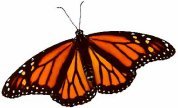Magic Moments at the End of Summer
by Julia Sneden
For my family (and I suspect
for many others), summers end seems to be fraught with ambivalent
feelings about the seasonal changes. We say a lingering, regretful
farewell to quiet days, but because we are a family of teachers,
we also feel a surge of energy and excitement in anticipation of
the new school term. We swelter in the dog days, but then a hint
of cooler weather brings the first stirrings of anxiety over what
winter will bring. We say sad farewells to visiting family members,
but as soon as they are out the door, we begin looking forward to
the holiday visits that are not too far away. Its not exactly a
sad time, this folding in of summers story, but any change is unsettling,
and change is definitely in the air.
There are a number of small ceremonies
we perform as we see summer out. We put away hot weather clothing and dig
out sweaters. We fold up the light blankets for storage, and hang the quilts
out to air. After a summer of serving simple salads, we try to recall recipes
for warm and warming suppers. We clean and put away the lawn mower, and
pull up plants that have already shriveled in the garden
These little observances are fairly
universal, but most of us also have a few small, idiosyncratic gestures
to mark the end of summer. One of my children, for instance, always jumped
back into the lake at the end of his last vacation swim, and took one small
pebble from the bottom to carry home for remembrance, his souvenir of
the trail, we called it.
My own favorite activity to mark
summers end is one that I discovered during my years as a classroom teacher:
finding the caterpillars of Monarch butterflies, bringing them indoors
to observe their metamorphoses, and seeing them off on their annual trip
south to Mexico for the winter. Its not an expensive or complicated enterprise.
Anyone who can identify milkweed growing in a nearby field will probably
be able to find Monarch caterpillars in late August or early September.
All you need is a jar of water, a pair of scissors, and a bit of
patience. This is a great activity to share with your favorite child, but
its also a rewarding experience if the only person involved in it is yourself.
The butterflies lay their eggs
on milkweed, because after they hatch, milkweed is the only food
the caterpillars will eat. The caterpillars are striped yellow,
white and black, and can be as small as a quarter-inch piece of
thin string. They will quickly grow to more than two inches long
and a quarter inch wide. 
Once youve located a monarch
caterpillar (large or small) on a leaf, cut the stem of the milkweed down
low, so that you have a stalk with many leaves (and the caterpillar on
one of them). Be sure to plunge the cut end into water at once, or it will
seal off. If youve forgotten to bring a jar with water, re-cut the stem
at home and put it into water at once. You may be able to keep the leaves
green that way (but its not a sure thing). The caterpillar holds on very
stoutly, so you dont have to worry about its falling off, but be careful
not to brush it against anything.
At home, set the jar on a newspaper
(to catch droppings) and then just watch the critter grow. Dont worry;
it wont leave the plant until it is ready to form its chrysalis. (A word
of warning: if you find a similar caterpillar on something other than milkweed,
it is not a monarch. The caterpillar of the swallowtail butterfly, for
example, is similarly striped, only with green instead of yellow. It will
definitely crawl off its plant if you put it indoors).
The caterpillar will be voracious,
so be sure you know where to find more milkweed. If it eats all the leaves,
find another stalk of milkweed, and transfer the caterpillar to it by cutting
off the leaf it is eating, and placing the cut leaf on top of a leaf on
the new stem, pinning it with a straight pin (careful: dont touch Mr.
Caterpillar!)
Dont worry if the creature fasts
for a day or two at a time, because when it grows too big for its skin,
it stops eating and sheds, and may shed its skin two or three times before
it goes into its chrysalis. In my classroom, we used a magnifying glass
to look at the shriveled skin that had dropped onto the newspaper, and
likened it to the sweaters that children sometimes toss aside when they
come indoors.
When the caterpillar is about
two or two and a half inches long, it will start to wander. At this point,
you must cage it or youll lose it. I make a cage out of a box with sides
cut out and screened with plastic screening, and then I place the jar,
milkweed and all, inside. It would be wise to put the box over it at night
after the critter gets really big, even if it hasnt started to wander,
because it will keep on eating no matter what the hour, and you dont want
it to wander off while youre asleep.
Once it starts to wander, the
caterpillar will crawl to the top of the cage (or possibly up to
the upper end of the stem of milkweed), hang itself upside down
in a J shape, and shed its skin. The chrysalis will be lumpy at
first, but very quickly it will become a thing of wonder, smooth,
lantern-shaped, and jade green, with glittering gold dots on it. In about 12 days, its surface will suddenly become clear, and youll
be able to see the butterfly wadded up inside. When this happens,
keep close watch birth is imminent. When the butterfly emerges,
it is damp and crumpled, and will hang upside down for quite awhile,
gradually pumping its wings until they are strong and sleek.
In about 12 days, its surface will suddenly become clear, and youll
be able to see the butterfly wadded up inside. When this happens,
keep close watch birth is imminent. When the butterfly emerges,
it is damp and crumpled, and will hang upside down for quite awhile,
gradually pumping its wings until they are strong and sleek.
Once the wings are spread out, you will be able to tell whether
the butterfly is male or female by the presence of two black dots
or swellings on two of the lines on the lower part of the wings. Do not rush to let the butterfly go. It can stay safely in its cage
for at least twenty-four hours without food, and will need time
to gather strength in its wings. When you are ready to let it go,
take the cage outside, open it, and put your finger gently under
the butterflys feet. It will probably hop onto your finger. If
you are patient and hold your hand up, the butterfly will take off,
circling to get its bearings, and sail away, usually to the south
toward the warmth of the sun as it starts off for its winter home
in Mexico. This ritual setting-free is, for me, a quintessential
magic moment, and my own quiet farewell to summer.
Do not rush to let the butterfly go. It can stay safely in its cage
for at least twenty-four hours without food, and will need time
to gather strength in its wings. When you are ready to let it go,
take the cage outside, open it, and put your finger gently under
the butterflys feet. It will probably hop onto your finger. If
you are patient and hold your hand up, the butterfly will take off,
circling to get its bearings, and sail away, usually to the south
toward the warmth of the sun as it starts off for its winter home
in Mexico. This ritual setting-free is, for me, a quintessential
magic moment, and my own quiet farewell to summer.
If you are enjoying this
process with a child, here are some books that you may find in the childrens
section of your local library, to help you explain and follow along as
the monarch does its thing.
- Monarch Butterfly by Bill Ivy; part of the Getting to Know Nature's Children series; Grolier Educational Corporation.
- Gotta Go! Gotta Go! by Sam Swope; Farrar, Straus & Giroux
- Discovering Butterflies by Douglas Florian; Chas. Scribner & Sons, NY
- The Travels of Monarch X by Ross E. Hutchins; Rand McNally & Co.
- Monarch Butterfly by Gail Gibbons; Holiday House
- Monarch Butterflies Mysterious Travelers; Dutton Childrens Books
Some sites relating to the endangerment of the Monarch:
World Wildlife Federation (Canadian branch)
Monarch Butterfly Sanctuary Foundation
Monarch Migration
The Ardent Collector (Vladimir Nabokov)






